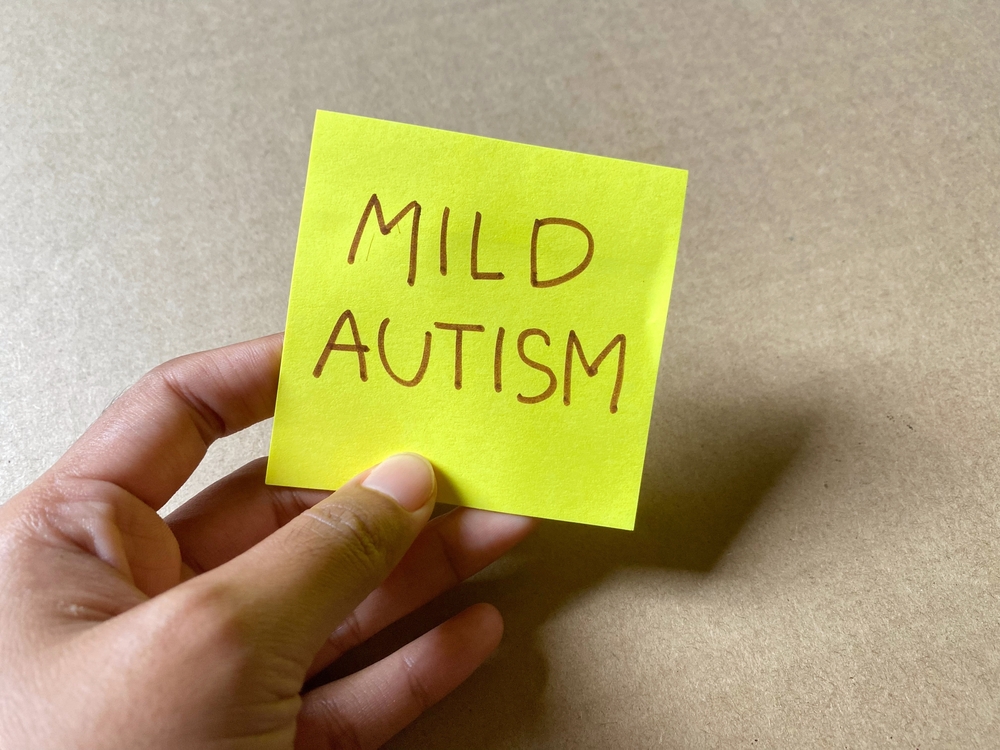Though not an official medical diagnosis, the term borderline autism spectrum disorder is frequently used to describe individuals who demonstrate some of the traits of autism without meeting the full criteria for autism spectrum disorder. Many people use terms such as borderline autistic or borderline autism to describe their experiences that resemble autism, yet fall short of a formal diagnosis. Understanding the importance of supporting individuals who fall into this “in-between” category begins with learning what these terms mean.
Is Borderline Autism an Official Diagnosis?
In our everyday language, the term ‘borderline autism” typically describes someone who demonstrates the traits of autism, but has not received a formal diagnosis after an official ASD evaluation. Simply put, the person may appear borderline autistic; however, a professional assessment has concluded they don’t fully meet the criteria defined in the Diagnostic and Statistical Manual of Mental Disorders (DSM-5) for autism spectrum disorder.
Why the Term isn’t Official, But it Still Matters
Despite the fact that borderline autism spectrum disorder isn’t an officially recognized condition, the concept remains extremely important because it validates the lived experiences of individuals who notice significant differences in sensory processing, social skills, or emotional regulation. It’s this term that may help them describe the challenges they’re experiencing and motivate them to seek the support they need, even without a formal diagnosis.
Related Phrases and Synonyms
Some of the interchangeable terms for borderline autism include “subthreshold autism” or “mild autism symptoms.” Yes, all these terms point to the idea of traits that resemble autism; they often differ in context. For example, “mild autism” usually applies to people who do meet the medical diagnostic criteria, but require less support. Meanwhile, “borderline” implies someone who falls just short of the diagnostic criteria.
Common Traits and Characteristics of Borderline Autistic Individuals
Those who identify with borderline autism spectrum disorder often describe certain shared overlapping features with ASD. They include the following:
- Social and Communication Differences: While not as severe as those diagnosed with autism, people with borderline ASD describe struggling with small talk, maintaining eye contact, and interpreting tone and body language.
- Sensory Processing Traits: Experience with heightened or reduced sensitivity to sounds, lights, smells, or textures is very common. These characteristics of autism often impact a person’s comfort levels in school, at work, or in public spaces.
- Emotional Regulation and Behavior: Though it usually occurs less frequently than in people who’ve been clinically diagnosed with autism, those with borderline autism may experience difficulty trying to manage their frustration, anxiety, or changes in routine.
Diagnosis and Challenges of Borderline Autism Spectrum Disorder
Screening and Assessment Tools
Certified ABA therapists utilize structured tools, interviews, and observations to assess communication, social, and behavioral functioning. There are times when these results reveal challenges that are real but not extensive enough for an autism diagnosis.
Overlap with Other Conditions
The diagnostic process can be further complicated when borderline cases of autism overlap in their symptoms with ADHD, anxiety, or learning differences. This overlap can confuse the diagnostic process, as some symptoms may mimic or mask others.
Mild Autism Symptoms vs. Borderline Autism
There is a subtle but essential distinction that needs to be highlighted between mild autism symptoms vs. borderline autism. Mild autism symptoms can be applied to individuals who’ve been officially diagnosed at the end of the spectrum, for individuals requiring less support. In contrast, borderline autism describes people who are on the cusp of meeting the diagnostic criteria.

Support and Therapy Options
Despite not having a formal ASD diagnosis, people with borderline autism spectrum disorder can benefit tremendously from early support.
ABA Therapy
If you’ve ever wondered, “What is ABA therapy?” Applied behavior analysis (ABA) therapy can help build social, communication, and daily living skills required to sustain an independent life.
Speech and Occupational Therapy
ABA speech therapy supports communication. Meanwhile, ABA occupational therapy addresses the motor coordination challenges and a person’s sensory sensitivities.
Family and Caregiver Support
Caregiver and parent training ABA empowers families to better understand the symptoms of borderline autism spectrum disorder. It also enables them to learn the tools and skills needed to provide regular support at home.
Next Steps
While borderline autism is not a clinical diagnosis, recognizing its symptoms and the struggles that people with it often experience, families and caregivers are one step closer to offering meaningful support. If you or your child demonstrates characteristics of being borderline autistic, early interventions can make a tremendous difference.
Contact Heartlinks ABA today to learn more about our customized evaluations, interventions, therapies, and the range of support options designed to help each child thrive, whether diagnosed on the autism spectrum or with borderline autism spectrum disorder. We proudly serve families across several different states, including:
Heartlinks provides compassionate, evidence-based care wherever you live.
FAQs
- Is borderline autism spectrum disorder a real diagnosis?
No. Borderline autism spectrum disorder is not a recognized medical diagnosis. It is an informal term that people use to describe a person who has autistic-like traits, yet doesn’t meet the criteria for an official autism diagnosis.
- What is the borderline spectrum of autism?
The term is typically used to describe people who display some traits of autism, yet they fall short of a formal diagnosis. For example, they may struggle with social, sensory, or behavioral challenges without qualifying as clinically autistic.
- Is it possible to be autistic and borderline?
Yes. A person can have both autism spectrum disorder and borderline personality disorder. The two are separate conditions. This dual diagnosis requires an experienced clinician to evaluate the person and distinguish between the overlapping conditions. It’s worth noting that due to the symptom overlap, mental health professionals must have an accurate diagnosis before providing the most appropriate treatment.
- Can someone with mild autism lead an everyday life?
Most definitely! Many people with mild autism symptoms live independently, develop careers, and maintain relationships. Thanks to support and therapy, these individuals can thrive while managing the unique challenges that mild autism presents.
5. Is borderline a spectrum disorder?
No. Borderline autism is not classified as a spectrum disorder. It’s a term used to describe people who are on the cusp of a diagnosis but not officially on the autism spectrum.
6. How do clinicians assess or diagnose borderline autism?
Clinicians use interviews, behavioral observations, and standardized screening tools to assess patients. If the individual doesn’t meet full diagnostic criteria, they may be described informally as borderline autistic.
7. When should parents seek help for borderline autistic traits?
If their child exhibits ongoing or persistent challenges in communication, social interaction, or sensory regulation, parents should seek help. The earlier the evaluation, the more timely the support will be.
8. What resources are available for parents of children with borderline autism spectrum disorder?
From ABA therapy providers and parent training programs to speech and occupational therapy, a wide range of support is available for parents. Organizations such as Heartlinks ABA can offer parents and their families customized resources and guidance across multiple states.
